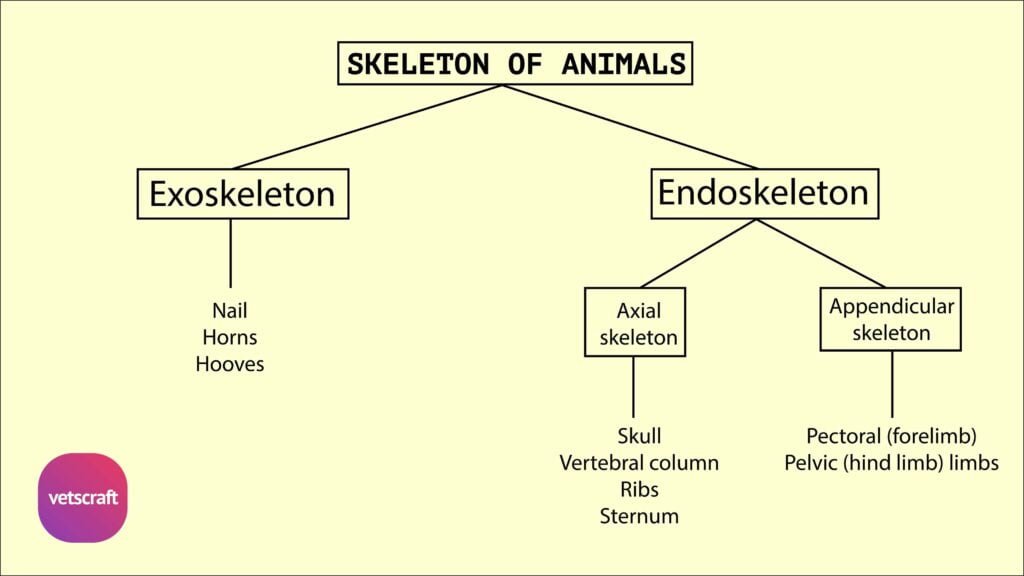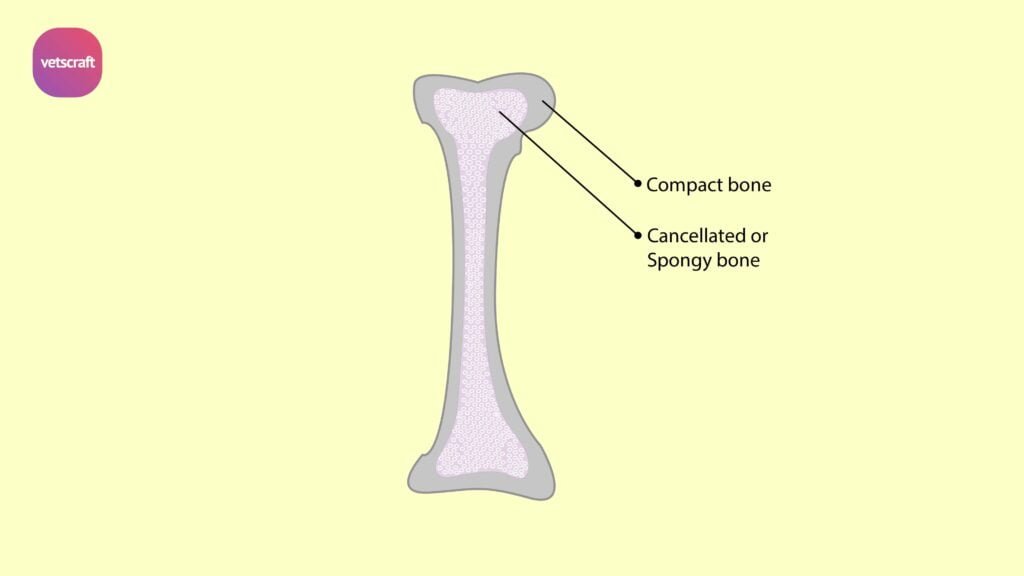TABLE OF CONTENTS
Metacarpal Bones of Animals: Comparative Anatomy in Domestic Species
The metacarpal bones are a group of long bones located in the forelimb (front limb) of animals, situated between the carpal bones (wrist region) and the phalanges (bones of the digits or toes).
These bones form the skeleton of the manus (hand/paw region) and play a key role in supporting body weight and facilitating movement, especially in quadrupeds.

Metacarpal Bones of Ox
The metacarpal bones of the ox consist of a large metacarpal (fused third and fourth), which carries the digits, and a small lateral metacarpal (fifth).
Large Metacarpal
Large metacarpal of ox is a bone placed vertically between the carpus above and fetlock below. It results from the fusion of third and fourth metacarpals. It consists of a shaft and two extremities.
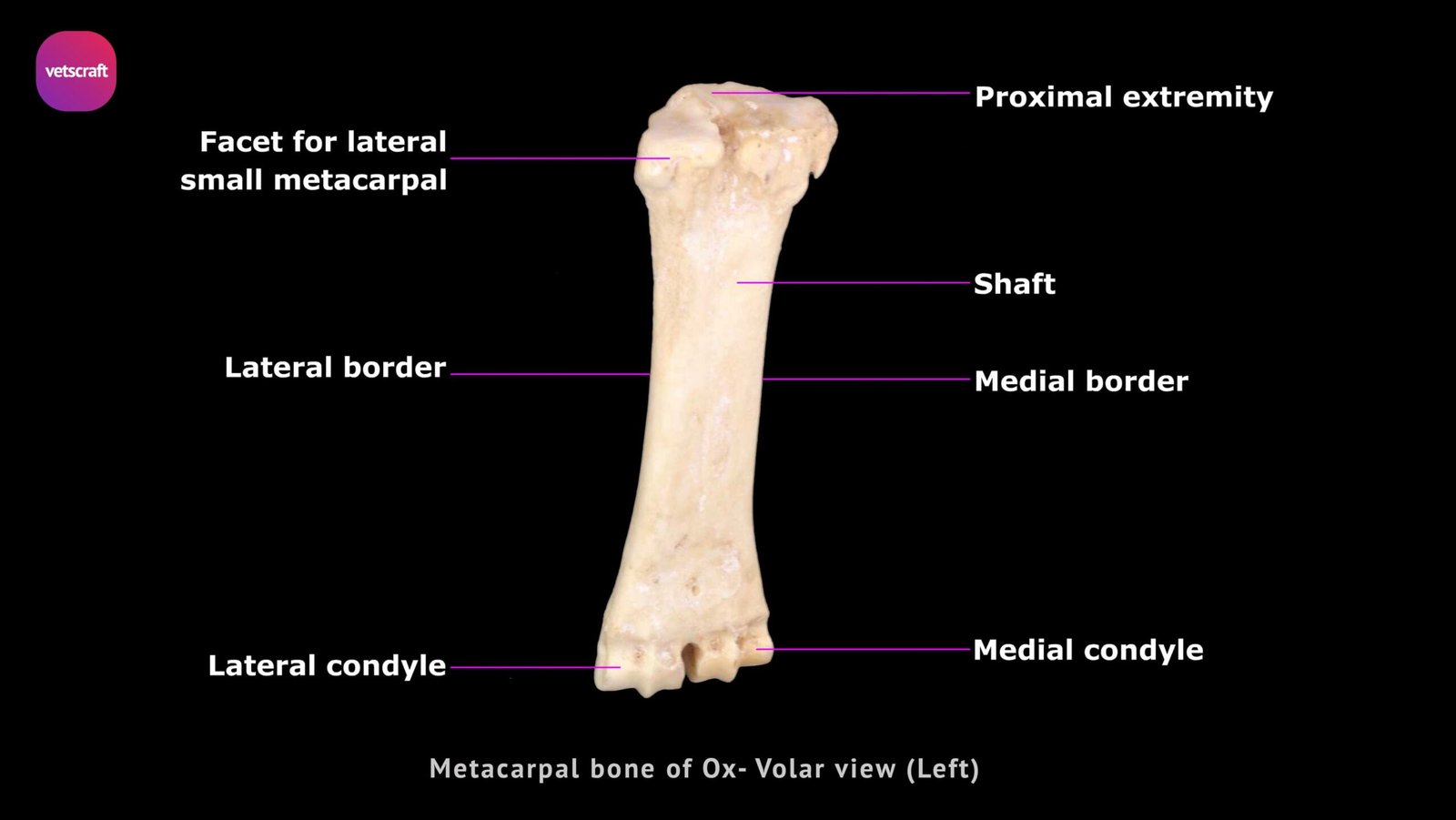
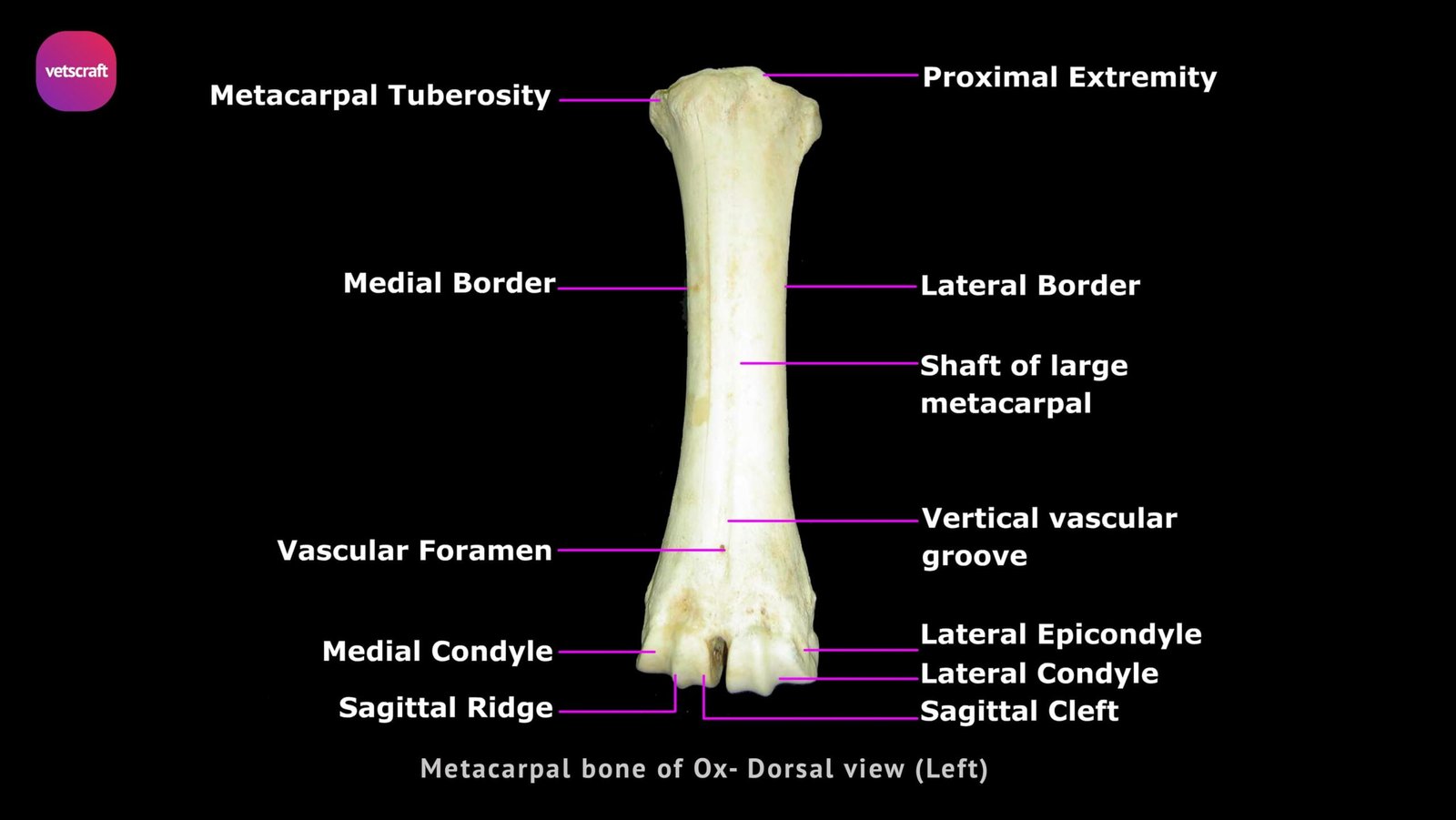
Shaft
Shaft of metacarpal is semi-cylindrical and has two surfaces and two borders. The dorsal surface is convex transversely and is marked by a vertical vascular groove at either end (usually at the distal end) of which is a foramen, which traverses the thickness of the shaft.
The volar surface is flat from side to side and presents a shallow vertical groove, which communicates with the anterior groove through the foramina described above. This surface is in contact with the superior sesamoidean ligament.
The borders are medial and lateral and rounded. The latter, at its upper part, has the lateral small metacarpal attached to it posteriorly.
Proximal Extremity
Proximal extremity of metacarpal has two facets separated by a ridge in front and a notch behind.
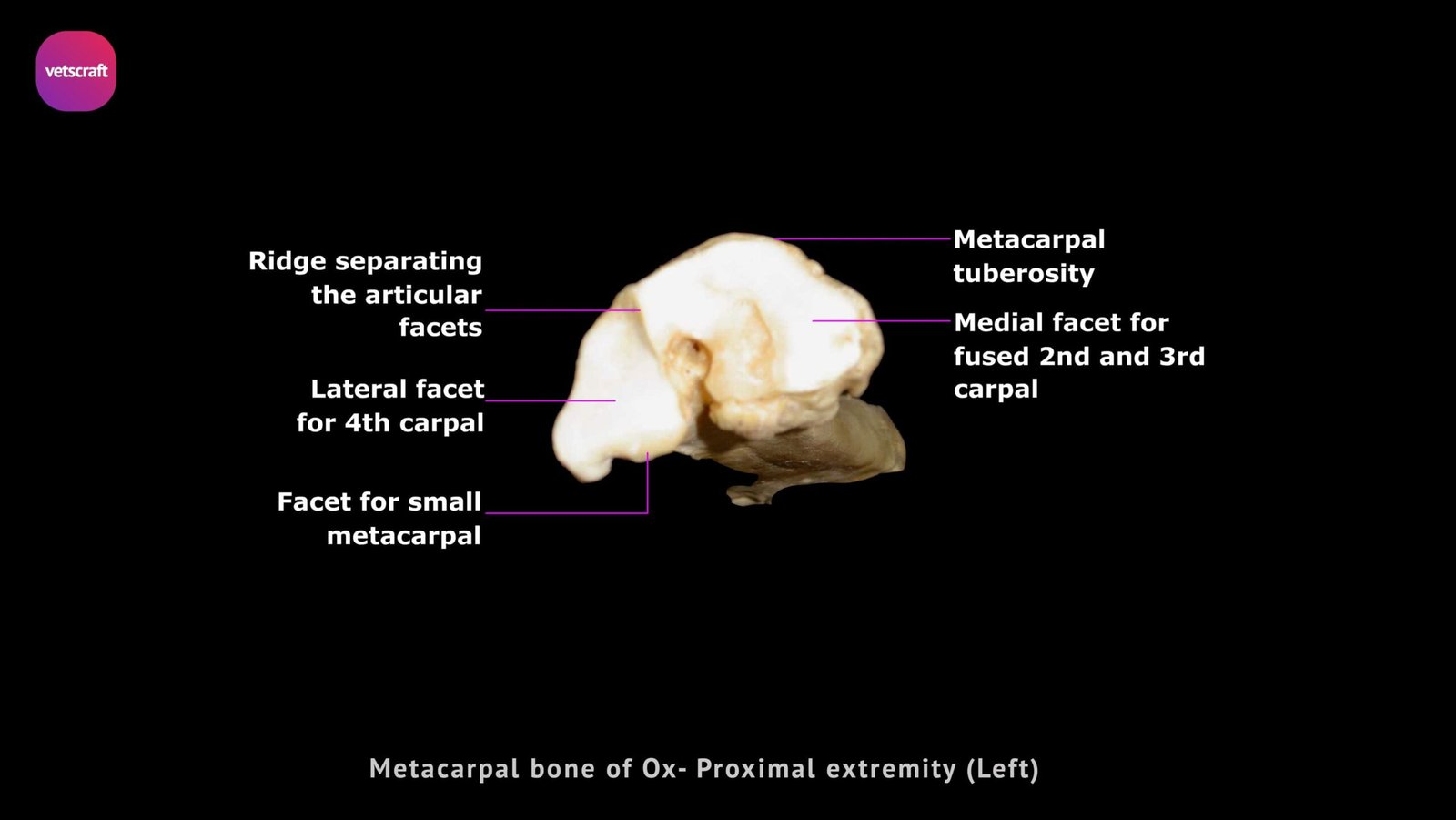
The medial facet is larger and corresponds to the second and third carpal, and the lateral to the fourth carpal. At the dorsal aspect of this extremity is the metacarpal tuberosity for the extensor carpi radialis. At the postero-medial aspect is a tubercle for the attachment of extensor carpi obliquus. The lateral aspect of the volar face bears a small facet for the lateral small metacarpal.
Distal Extremity
Distal extremity of metacarpal is divided into two parts by a sagittal cleft. Each part is made of two condyles separated by a sagittal ridge for articulation with the first phalanx below and two sesamoids behind.

The medial condyle is slightly larger than the lateral. The abaxial aspects of each division are depressed for ligamentous attachment.
Lateral Small Metacarpal (Fifth Metacarpal)
Lateral small metacarpal (fifth metacarpal) of ox is an aborted long bone and is an inch and a half long. The bone is attached to the postero-lateral aspect of the proximal extremity of the large metacarpal.
The proximal extremity is rounded and bears a small facet on the anterior face for the large metacarpal. The distal extremity is pointed.
Metacarpals of Horse
The metacarpus of horse consists of one large metacarpal (third) and two small metacarpals or splints (second and fourth).
Large Metacarpal
The vascular grooves on the dorsal and volar faces are absent in the large metacarpal of horse. The volar face is roughened on either side in its proximal two-thirds for attachment of the splints, with which it forms a wide groove for the lodgment of the suspensory ligament. It articulates with the second, third, and fourth carpals above and, by means of small facets on either side, with the proximal extremities of the splints.
The distal extremity of the large metacarpal resembles one of the parts of the distal extremity of the large metacarpal of the ox.
The medial condyle of the articular area for the first phalanx is slightly larger than that of the lateral.
Small Metacarpal
The shaft of each small metacarpal of the horse is three-sided. The dorsal face is rough for attachment to the large metacarpal.
The proximal extremity is relatively massive and has one or two facets dorso-laterally for the large metacarpal.
The medial bone bears two facets above for the second and third carpals, while the lateral presents one facet for the fourth.
The distal extremity is in the form of a small nodule and usually forms the ‘button’ of the splint.
Metacarpals of Sheep and Goat
The large metacarpal bone of sheep and goat resembles that of an ox, but the small metacarpal is usually absent. If present, it is in the form of a ridge on the large metacarpal bone.
Metacarpals of Pig
Fowl has four metacarpal bones. The first is absent. The third and fourth metacarpals are large and carry the chief digits, while the second and fifth are much smaller and bear the accessory digits.
Metacarpals of Dog
Dog has five metacarpal bones. In these, the first is the shortest, the third and fourth are the longest, and the second is longer than the fifth.
The proximal ends articulate with each other and the first four with the corresponding carpals. The fifth metacarpal also articulates with the fourth carpal.
Metacarpals of Rabbit
Rabbit has five bones in each metacarpal. They are all cylindrical in shape. The first one is the smallest, and the third and fourth are the longest.
Metacarpals of Fowl
The metacarpus of fowl includes three bony elements, which fuse together with the lower row of carpal bones to form a single bone, the carpo-metacarpus.
The first, i.e. most medial, is in the form of a nodule projecting from the upper extremity of the second bone to which it is united.
The second and third bones are united at their extremities; a narrow interval separates their shafts.
